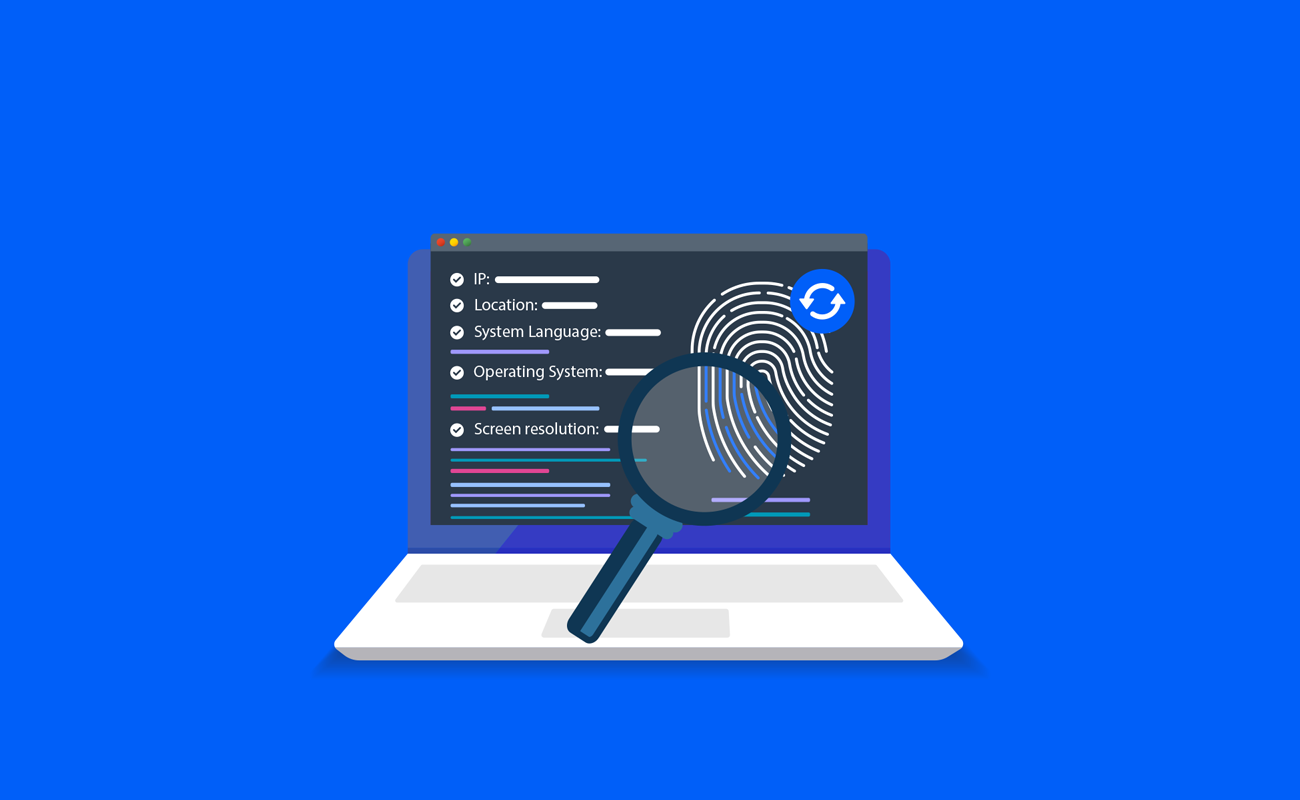True Mobile Fingerprint Emulation: TrafficBotPro vs the World
Introduction: Mobile Traffic Is the New Normal
In 2025, mobile traffic isn’t just prevalent—it's dominant. More than 70% of all web traffic now comes from smartphones and tablets, and most ad clicks happen on mobile. From Google searches to app-based browsing, platforms are evolving to prioritize mobile behavior. This shift, however, exposes marketers to ever-tighter fraud detection systems designed for mobile screens, sensors, and user behaviors.
Mobile fingerprint detection today goes beyond just analyzing user agent strings. Platforms like Google, Facebook, and top ad exchanges now scrutinize hundreds of parameters: touch gestures, device orientation, pixel density, rendering behavior, and even sensor data from gyroscopes or accelerometers. This creates an environment where even minor inconsistencies—like an Android IP fingerprint but desktop-like touch behavior—can trigger alarms, trashing your campaign.
In this blog, we dive deep into how TrafficBotPro mastered mobile fingerprint emulation, how it differs from other tools, and why its realism is reshaping digital traffic strategies through authentic mobile simulation.

The Hidden Complexity of Mobile Fingerprint Detection
You might think spoofing a mobile user agent string is enough to mimic a smartphone. Think again.
1. Touch, Tap & Gesture Patterns
Mobile devices rely on touch-based navigation: taps, swipes, pinch-outs, inertia scrolling, and even 2-finger gestures. Platforms can now detect unrealistic input—like mouse events with no momentum—or unnatural timing.
2. Sensor & Motion Data
Gyroscope, accelerometer, orientation sensors, and vibration APIs are now fingerprinted. Real users generate unique accelerometer graphs when tilting the phone; bots can't mimic that in a static way.
3. DevicePixelRatio & CSS Rendering
High-DPI screens, retina displays, and dynamic device pixel ratios (e.g., 2x, 3x) produce visual fingerprints. Rendering WebGL, Canvas, or font smoothing behaves differently on different chipsets, and detection systems compare this against claimed device types.
4. Environmental Consistency
A user connecting through a Tokyo proxy should also have language “ja”, timezone JST, fonts common in that region, keyboard input settings, and more. Missing or mismatched details—including fonts or screen metrics—can be red flags.
Put simply: mobile fingerprinting is a symphony of signals, and your traffic must play in harmony to be perceived as real.
The Challenge: Why Most Tools Fail
Many so-called anti-detect browsers or automation platforms claim “mobile support.” The reality, however, is far from convincing:
Only Surface-Level UA
Most tools use static user-agent rotations but ignore the deeper device context—no touch behavior, no sensor emulation.Incorrect Rendering
Desktop engines like Chrome or Firefox masquerade as mobile but don’t match the rendering quirks of Safari/WebKit on iOS or Chrome on Pixel devices.No Sensor & API Integration
Touch events reinterpreted through mouseX/mouseY? That doesn’t fool modern detectors. Similarly, missing sensor APIs or battery/memory signals are suspicious.Fixed Behavior Flow
Bots still follow sequential flows: open → wait → click → exit, with no unpredictable pauses, scroll depths, or page interactions.
As detection evolves, these half-baked emulations simply do not suffice. They’re easily flagged, blocked, and penalized.
TrafficBotPro’s Mobile Fingerprint Mastery
TrafficBotPro was built for this mobile-first reality:
Full Device Simulation
TrafficBotPro replicates every vector of a real smartphone:
Accurate User-Agent tied to vendor, model, OS version
Realistic pixel density and screen resolution simulated
Genuine mobile WebGL & Canvas rendering
Touch-based scroll, swipe, pinch, and zoom behaviors
Emulator for gyroscope, accelerometer, and device orientation values
System-level environment matching: time zone, language, fonts
This ensures each simulated mobile browser instance is a holistic digital twin of a physical device.
Touch-First Interaction Logic
Instead of stylized clicks, TrafficBotPro injects Touch Events:
Multi-finger gestures: pinch-to-zoom, 2‑finger scroll
Tap timing randomization with variance
Momentum scrolling emulates user finger swipe
Precision input for form fillouts, taps on interactive elements
These nuanced behaviors make visits feel like real users—sliding through WhatsApp or TikTok rather than scripted “click clicks.”
High-Fidelity Rendering & Visual Differences
WebGL and Canvas fingerprinting aren’t just for desktops. Mobile GPUs produce unique render patterns.
TrafficBotPro can switch between:
Apple A-series rendering (iPhones/iPads)
Qualcomm Adreno or ARM Mali (Android devices)
This means Canvas-based fingerprint differences (e.g., anti-aliasing, shader precision) match the claimed device model.
Perfect Proxy + Localization Consistency
Use a Brazilian proxy? The browser will simultaneously adjust:
time zone to GMT−03:00
locale to pts-BR
keyboard layout to match Portuguese
typical fonts (e.g., Roboto, Noto Serif)
relevant battery status and network type
This reduces the chance of platform detection based on environmental mismatch or unrealistic metadata.
Programmable Yet Human-Realistic
TrafficBotPro supports:
Intelligent click path chains
Workflow logic with delays, loops, and conditionals
Randomized click positions, hover durations, and scroll depths
Multi-device simulation via native multi-threading
Under the hood, they use human data. Behavioral psychologists tested browsing patterns, heatmaps guided tap positions, and calibration involved testing thousands of sessions on real devices. The result? Over 40% of the script is hand-tuned, making it unpredictable and credible.
Outcomes: Real Use Cases & Performance
SEO Click Infrastructure
Simulate multiple mobile users searching for target keywords across locations, with realistic scroll and click behavior. Many clients saw:
Lower bounce rates
Increased dwell times
Higher rankings due to improved user behavior metrics
Advertising & Arbitrage Protection
Bots that click your ads must look human. TrafficBotPro ensures:
Ads clicked with context
Random filtering out of low intent or brand mismatch
Less likely invalid click flags from ad networks
Automated App Testing
Testing mobile apps via web automation? TrafficBotPro’s high-fidelity simulation enables:
Triggering sensor-based behaviors
Testing layout shifts on pinch zoom
Automation of gesture-aware features
Social & Engagement Tasks
From Instagram to TikTok, tasks like:
Liking posts with swipe gestures
Viewing stories with scroll pauses
Interacting with carousel features
All are possible without detection.
TrafficBotPro vs. Legacy Tools
| Feature Area | TrafficBotPro | Typical Bots | Legacy Anti‑Detect |
|---|---|---|---|
| Full Mobile Fingerprint | ✅ Yes | ❌ No | ⚠️ Partial |
| Touch & Gesture Simulation | ✅ Comprehensive | ❌ Very Basic | ⚠️ Limited |
| Sensor/Accelerometer | ✅ Yes | ❌ No | ⚠️ No |
| Pixel Rendering Accuracy | ✅ Yes | ❌ No | ⚠️ Partial |
| Proxy & Locale Sync | ✅ Auto | ❌ No | ⚠️ Manual Config |
| Behavior Randomization | ✅ Strong | ❌ Fixed Flow | ⚠️ Simple Loops |
Final Thoughts: Simulate Mobile Users. Not Bots.
Mobile traffic is now the heart of digital engagement. To truly harness it, your traffic needs to look, feel, and behave like real users—down to the tiniest sensor detail.
TrafficBotPro is not just another bot tool—it's designed to emulate a living, breathing smartphone.
If your goal is to build real mobile traffic for websites, enhance SEO, protect ad spend, or safely automate mobile flows, static UA rotation won’t work.
You need a behavioral twin. And in 2025, that twin is TrafficBotPro.
Keywords Used
Primary Keywords: mobile traffic, mobile fingerprint, website traffic, Android traffic, iOS traffic
Long-Tail Keywords: mobile browser fingerprint simulate, iOS device fingerprint, realistic mobile traffic for websites, advanced mobile fingerprint customization, mobile user agent spoofing



